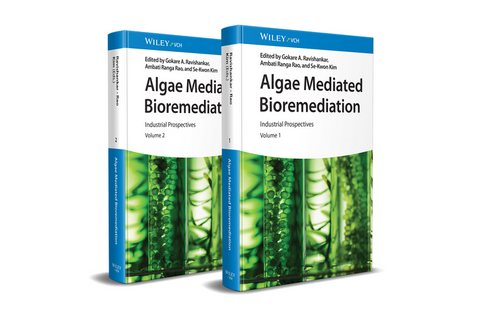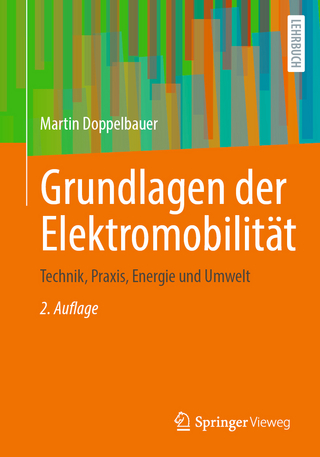
Algae Mediated Bioremediation
Wiley-VCH (Verlag)
978-3-527-35247-0 (ISBN)
Prof. G. A. Ravishankar is a Professor of Biotechnology, serving as Adjunct-Vice-President in Research and Development, Life Science Division, Dayananda Sagar Institutions, Ex-Chairman of Board of Studies in Biotechnology, Visvesvaraya Technological University (VTU), Belagavi, Karanataka, India. Previously, Dr. G.A. Ravishankar worked as Chief Scientist & Head, Plant Cell Biotechnology Department, Council of Scientific and Industrial Research-Central Food Technological Research Institute, Government of India, Mysore, Karnataka, India. He has 35 years research experience in reputed national research laboratory. He has received international and national fellowships from various scientific bodies namely FAFST, FNASc, FNAAS, FBS, FSAB, FISAB, FAMI, FIAFoST (Canada), FIFT(USA),CFS(USA). He is involved in various research fields such as Plant biotechnology and Biochemistry, Plant secondary metabolites, Algal Biotechnology, and Food Science and Technology. He has received several awards in the areas of plant and microbial biotechnology, food science and technology and algal biotechnology areas. Dr. A. Ranga Rao has been working as Associate Professor and Senior Scientist in the Department of Biotechnology, Vignan?s Foundation Science, Technology and Research University, Andhra Pradesh, India. He has 17 years of experience in both teaching and research. Previously Dr. Rang Rao worked as Visiting Senior Research Fellow (Equivalent to Associate Professor), Visiting Research Assistant Professor, Postdoctoral Research Associate and Research Fellow at various internationally recognized Universities such as Arizona State University (USA), University of Malaya (Malaysia), Beijing Normal University-Hong Kong Baptist University (China) and CSIR-Central Food Technological Research Institute (CFTRI), India. He has been working in the multidisciplinary area of Algal biotechnology and byproducts and Food Science and Technology. Dr. Ranga Rao worked extensively on optimization, production of algal biomass, mass culture of various algal species in raceway ponds and photobioreactors in addition developed extraction methods, isolation, and characterization of bioactive compounds such as astaxanthin and its esters, lutein, hydrocarbons, and fatty acids etc. by various analytical approaches, and also evaluated their possible nutraceutical applications. Based on his accomplishments, he received research grants, travel, and scientific awards internationally and nationally.
1. Strategies for achieving biomass production coupled to degradation to toxicants
2. Utilization of algal biomass for producing biochar, biofertilizers, and valuable algal metabolites
3. Environmental impact of phycoredmidation with special reference to CO2 sequestration
4. Removal of heavy metals from terrestrial and aquatic ecosystem by microalgae
5. Bioconversion of agricultural waste with the using of microalgae
6. Phycoremediation of municipal wastewater by microalgae
7. Phycoremediation of food processing wastewater by algae
8. Phycoremediation of palm oil wastewater by algae
9. Phycoremediation of textile wastewater by algae
10. Phycoremediation of chemical industrial wastewater (winery/ olive mill) by algae
11. Phycoremediation of piggery wastewater by microalgae
12. Phycoremediation of anaerobic digestion effluent (dairy manure, poultry manure, sewage sludge, food waste and dairy manure) by microalgae
13. Phycoremediation of dairy and poultry effluents by algae
14. Phycoremediation of sugar mill wastewater by algae
15. Phycoremediation of tannery wastewater by algae
16. Phycoremediation of pulp and paper wastewater by algae
17. Phycoremediation of sewage wastewater and industrial flue gases
18. Phycoremediation of swine wastewater and beef feedlot and by microalgae
19. Phycoremediation of aquaculture wastewater by algae
20. Production of biochar from algal biomass for wastewater remediation
21. Removal of pharmaceutical and personal care products from wastewater using microalgae
22. Phycoremediated algal biomass as biofertilizers for sustainable crop production: An overview
23. Microalgal bacterial aggregate system for wastewater treatment
24. Algal based bioremediation of water contaminated by pesticides in urban agricultural areas
25. Phytoremediation with bio business and bio economy
26. Integrated microalgae wastewater for bioremediation: An overview
27. Aquaculture wastewater treatment through microalgae for biomass production and its use in agriculture, feed, and energy applications
28. Environmental impact on blooms in fresh water and aquatic water
29. Emerging technologies of algal based wastewater phycoremediation for bio-fertilizer production for sustainable agriculture
30. Life cycle assessment of algal based wastewater treatment: An overview
31. Phycoremediation of wastewaters using synergistic approach of microalgae
32. Impact of phycoremediation potential on ecological and environmental
33. Enhancement of wastewater treatment by metabolic engineering approaches of microalgae
34. Current scenario on status, progress, and challenges of phycoremediation: An overview
35. Microalgae mediated bioremediation: Current trends and opportunities
| Erscheinungsdatum | 24.04.2024 |
|---|---|
| Verlagsort | Weinheim |
| Sprache | englisch |
| Maße | 170 x 244 mm |
| Gewicht | 666 g |
| Themenwelt | Naturwissenschaften ► Biologie ► Ökologie / Naturschutz |
| Naturwissenschaften ► Chemie ► Technische Chemie | |
| Schlagworte | Algen • bioremediation • Chemie • Chemistry • Environmental Science • Environmental Studies • Industrial Chemistry • Nachhaltige u. Grüne Chemie • Sustainable Chemistry & Green Chemistry • Technische u. Industrielle Chemie • Umweltforschung • Umweltwissenschaften |
| ISBN-10 | 3-527-35247-3 / 3527352473 |
| ISBN-13 | 978-3-527-35247-0 / 9783527352470 |
| Zustand | Neuware |
| Informationen gemäß Produktsicherheitsverordnung (GPSR) | |
| Haben Sie eine Frage zum Produkt? |
aus dem Bereich


